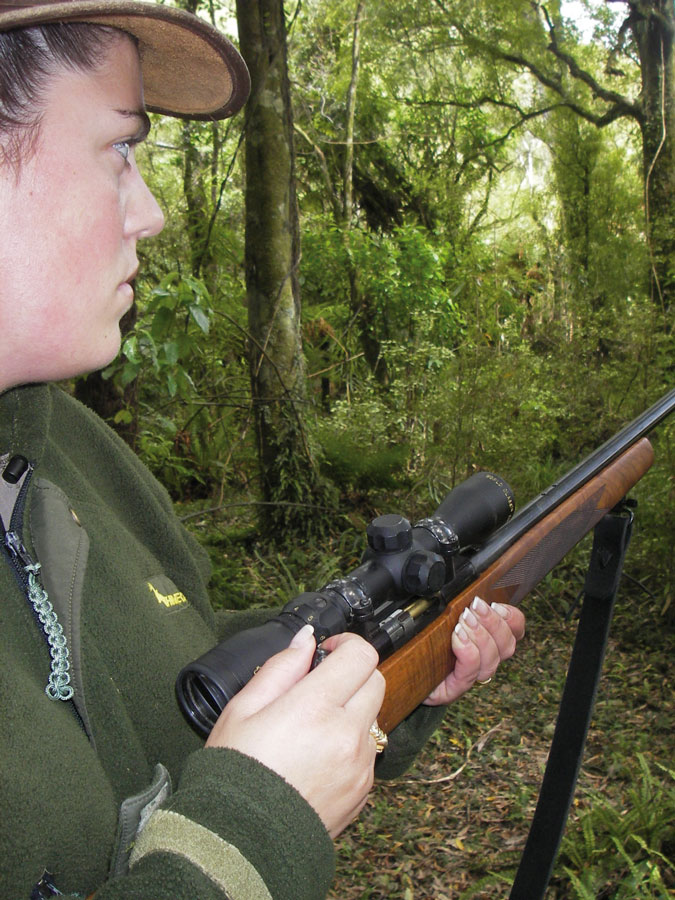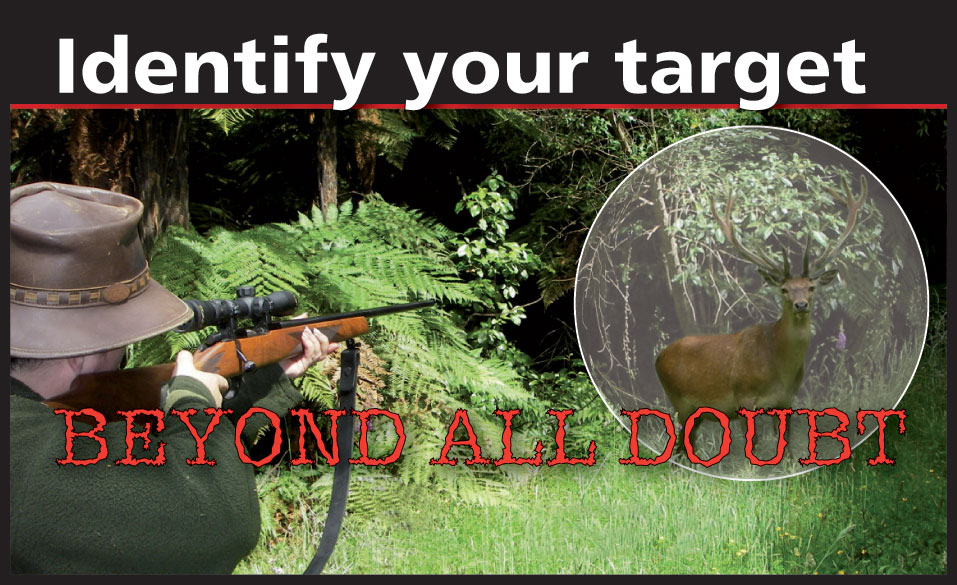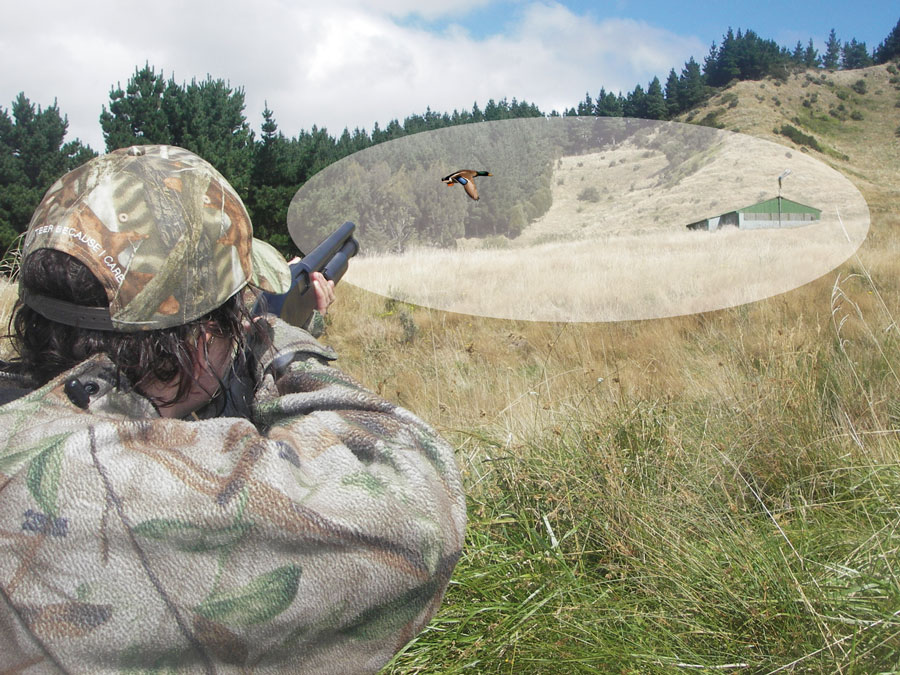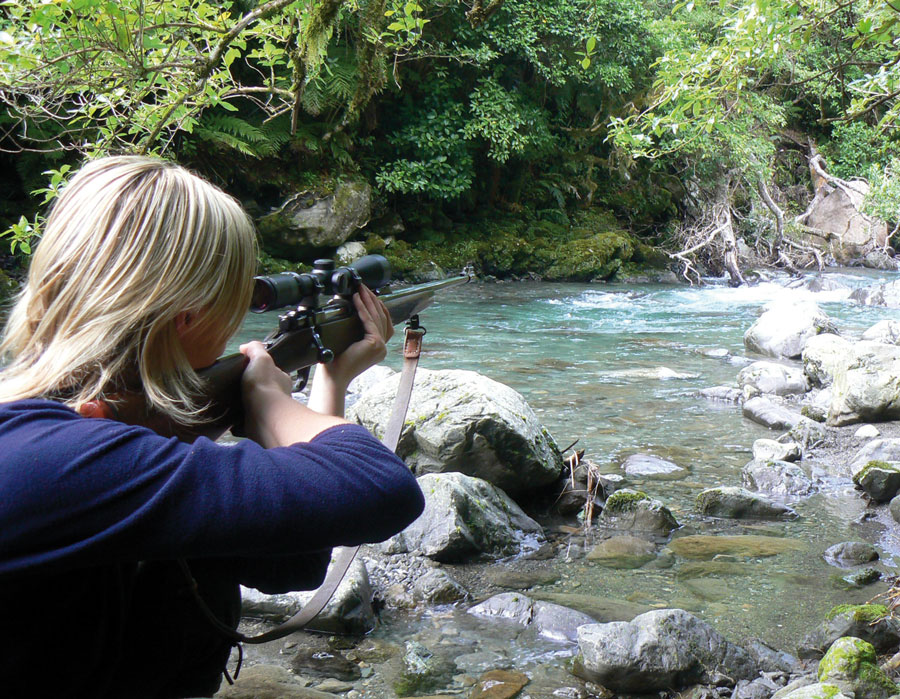Understanding Firearms
Rule 1: Treat every firearm as loaded
- Keep your finger off the trigger; always point the muzzle in a safe direction; open the action and inspect the chamber and magazine.
- Do not take anyone’s word that a firearm is unloaded.
- Check every firearm yourself. Only pass or accept a firearm that has the muzzle pointed in a safe direction; the action open; and is not loaded.
- If you do not know how to open a firearm, leave it alone.
- Keep clear of the muzzle.
- If it is someone else’s, ask them to show you that it is empty.
- A firearm must be open and empty before you pass it to or accept it from anyone (see Picture).

Rule 2: Always point firearms in a safe direction
Loaded or unloaded, always point the muzzle in a safe direction.
- A safe direction will depend on where you are.
- Remember that bullets can go through walls and ceilings and they can ricochet against flat or hard surfaces.
- Never point a firearm at anyone or at yourself.
- Keep focussed when handling firearms
- To avoid unintentional firing or damage, firearms should never be leant against vehicles or any place where they could slide or fall.
- Always be particularly careful when placing firearms in, or removing them from, vehicles, boats or storage. The muzzle should be pointed away from you (and anyone
else nearby) and your finger should be off the trigger..
Be aware that firearms can go off unintentionally when:
- Closing the action
- Releasing the safety catch
- Uncocking
- Or opening a loaded firearm
Rule 3: Load a firearm only when ready to fire
- Only load your ammunition into the magazine when you have reached your shooting area. (The firearm is then carried with the bolt or action closed on an empty chamber. The rounds (i.e., ammunition) are readily available from the magazine and it only takes a second to open the action and feed a round into the chamber.)
- Do not load the chamber until you are ready to shoot.
- Unload the chamber when not firing a shot (Put the round back in the magazine and close the bolt on an empty chamber.)
- Unload completely – no rounds in the magazine or chamber – before leaving a shooting area or entering a hut or camp. Double check.
Self loading shotguns and rifles
Because it is not practical to apply this rule to self loading shotguns and rifles, it is recommended that when you acquire your target you load the firearm and place the previously tested safety catch on ‘safe’. If you have released the safety catch and then decide not to shoot, re-apply the safety catch. Whenever a round is in the chamber you must be absolutely sure that the muzzle is pointing in a safe direction. Test the safety catch before loading any rounds into the chamber. If you have any doubt about the safety catch don’t trust it. Have it inspected by a gunsmith.
Note: No matter what type of firearm you use, you should be cautious when using the safety catch. In most cases they lock the trigger or the bolt but, like all mechanical things, they are subject to wear and tear and may not work properly. The safety catch is only one of several safety precautions you should use when handling firearms.
* A safety catch only supplements safe handling.

Rule 4: Identify your target and what is behind it
 You must positively identify your target beyond all doubt before firing. If in doubt, don’t shoot! The shooter, and anyone supervising an unlicensed shooter, must both positively identify the target.
You must positively identify your target beyond all doubt before firing. If in doubt, don’t shoot! The shooter, and anyone supervising an unlicensed shooter, must both positively identify the target.
- Make absolutely certain that the movement, colour, sound and shape of your target is identified correctly.
- Identify the whole animal
- Do not fire at movement only
- Do not fire at colour only
- Do not fire at sound only
- Do not fire at shape only
Target identification issues
When a hunter is tired, or excited about sighting game animals, emotions may override rational thinking (buck or stag fever). Perception can play tricks and you may ‘see’ what you expect to see. Objects – often people – look like game animals.
There could be other hunters nearby. They may make noises imitating the calls of game. Even the definite sighting of skin and antlers is not positive enough – hunters have been shot while carrying a deer.
BEFORE you shoot! Ask yourself:
“Is this a person?”
This will focus your mind toward expecting to see a person, rather than assuming it is an animal.
Keep your finger away from the trigger until you are ABSOLUTELY CERTAIN it is safe to fire.
Bright coloured clothing and gear can help you to be seen, especially in dim or fading light such as that in the early morning, late evening or under the cover of bush. However, no one colour will be easily seen at all times of the day and in all surroundings. Wear a colour that stands out from the background you are shooting in, and is different from any game animals in that area. While this may minimise your risk of being shot, it will only do so if other hunters properly identify their targets. Blaze orange is the recommended colour for all field shooting.
Hunters should use binocular vision, rather than rifle telescopic sights only, to identify their target. If using binoculars or telescopic sights, beware of the ‘tunnel vision’ which limits your field of view. Sweep the telescope or binoculars from side to side to ensure no person is close to your field of fire.
Remember – it is ALWAYS the responsibility of the shooter to clearly identify the target.
This is regardless of whatever strategies other hunters may or may not use to be seen.
Positively identify your target beyond all doubt. Other hunters may be wearing clothing that blends with the surroundings so: Do not fire at movement. Do not fire at colour. Do not fire at shape. Do not fire at sound.
Rule 5: Check your firing zone
Be aware of what is between you and your target, and in the area beyond your target.
Ask yourself: “What could happen if I miss my target?”
Extreme range for projectiles may be as much as:
.22 rimfire 1.5 kilometres
.308 calibre 4.5 kilometres
Airgun up to 400 metres
Shotgun from 250 metres to 750 metres (Depending on the type of shot)
Sights need to be correctly aligned to prevent rounds falling short or going far beyond the target.
When firing a shotgun, be aware that the spread of the shot may endanger something other than the target.
Safety points
- Never fire when companions are ahead of you, especially when you have lost sight of them.
- Never shoot when stock, human activity or buildings are in the area.
- It is unsafe to shoot at a target on the skyline. Remember that many hunting areas have rural and urban developments close by.
- Night shooting can be dangerous, especially if using telescopic sights, so only shoot at night if you are certain it is safe to do so. Spotlights light up only a small part of the firing zone and the projectile’s range.

Telescopic sights restrict your field of view
Use extra care when shooting at a moving target, particularly with telescopic sights, because your field of view is restricted/limited and changes rapidly. There is a greater danger of someone moving into your firing zone without you noticing.
- When shooting near thick bush or scrub you may not be able to see your whole firing zone.
- A charge of shot from a shotgun is very wide, particularly at longer ranges.
- Ricochets can be caused by any flat or hard surfaces – rocks, snow, trees and even water. Be especially careful in rocky river beds.
Firing zones
Your firing zone changes rapidly when you follow a moving target with a firearm. As you swing the muzzle around in an arc be aware of the position of other hunters. Make sure they are not caught in the path between your firearm and the target, or beyond the target. This applies particularly when shooting with shotguns. Duck shooters sharing a hide can drive vertical poles into the ground to prevent an ‘over- swing’ endangering a companion.

Rule 6: Store firearms and ammunition safely
You are required by law to have a safe and secure place to store your firearms. All firearms and ammunition should be stored separately, out of the reach of children, out of view and in an approved cabinet.
A complete firearm is dangerous in the wrong hands, so lock away your unloaded firearm and ammunition separately. Do this immediately when you return to camp or home from shooting.
Securing firearms out of sight will help prevent removal by thieves.
For legal requirements in relation to transportation of firearms and ammunition, see Transporting firearms and ammunition and Car and Public Transport.
Firearms Storage
The Firearms Act 1996 (Schedule 4) provides for storage standards for firearms and ammunition. The following is a brief summary of the storage requirements which you must be able to satisfy. Victoria Police recommends you source a commercial standard and purpose-built safe.
Storage Requirements (for Category A + B Firearms)
- Hard wood or steel container – not easy to penetrate.
- If the container weighs less than 150kg when empty, it must be securely fixed to the floor or wall frame.
- When a firearm is in the container, the container MUST be locked with a lock of sturdy construction.
- The premises must be fitted with an ‘intruder alarm system’ if more than 15 firearms are stored on the premises. ‘Intruder alarm system’ means an alarm system which is installed, maintained and operated in accordance with Australian Standard 2201.1.2007 (as amended from time to time) and which, in the event of an intrusion, activates an audible alarm warning device and an external visible alarm warning light.
- Ammunition must be stored in a separate locked container (not within the firearm).
- All Victorian Licence holders should when travelling interstate, check with that state’s Police Firearms Registry as to licensing and storage requirements.
All family members, especially children, need to know what a firearm is, what it is designed for, and why it must not be touched. It is essential that children realise that firearms are not playthings and must be treated with caution and respect. Children should be taught not to touch a firearm without an adult present, and if they find a firearm to seek the assistance of an adult.
Securing firearms enhances family and community safety.

Rule 7: Avoid alcohol and drugs when handling firearms
When handling a firearm you must be able to think clearly. Alcohol and drugs (even those prescribed) dull and slow your mental and physical reactions.
Alcohol and Firearms do not mix! Ever!
- Wait until your firearm has been safely locked away before you consume alcohol.
- Do not shoot with others who are, or have been, drinking alcohol or taking drugs.
Rule 8: Never have loaded firearms in the car, home or camp
Many people have been injured or killed in these situations due to this rule being broken.
- Before entering a car, home or camp completely unload your firearm.
- Ensure that the action is open and that there is no ammunition in either the breech or the magazine.
- Pay particular attention to tubular or rotary magazines to ensure that all rounds are removed.
Rule 9: Never fire at hard surfaces or water
Consider the area in which you are shooting. Could a ricochet occur? A ricochet will almost certainly occur from shooting at water or smooth flat surfaces and rocks.
- Remember that when a ricochet occurs you have lost control of where the projectile will finish up, resulting in possible injury to another person or damage to property.
- Be especially careful when shooting with an air rifle due to the slow velocity of pellets they fire. They are very prone to ricochet and should be treated with the utmost of caution.
- Rimfire and centrefire bullets are prone to ricochet as they lose velocity at the end of their travel.
- Exercise extreme caution when dispatching downed game birds on water.
Rule 10: Dont climb fences or obstacles with loaded firearms
Each year there are shooters who are shot (usually by their own firearm) as they attempt to cross/climb fences and/or obstacles with loaded firearms.
Before attempting to negotiate a fence or obstacle unload your firearm. Do not rely on safety catches. Safety catches are only intended to supplement the safe handling of firearms.
If attempting to cross/climb a fence alone:
(a) unload your firearm;
(b) place it through the fence and lay it on the ground with the muzzle pointing in a safe direction. Then cross the fence away from your firearm.
If crossing/climbing a fence with a friend:
(a) ensure all firearms are unloaded;
(b) use the same method as for crossing alone, or hand your unloaded firearm to your companion and then cross the fence. Then have your companion hand to you your unloaded firearm and his or her unloaded firearm.
* Think before you cross: unload that firearm.

